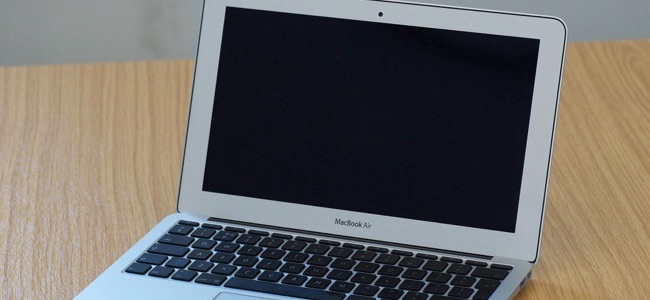

Don't be concerned if you don't see or hear anything happen - just press the buttons all at once, then release, and that's the reset. Wait a few more seconds, then turn it back on.
#HOW TO TURN ON MACBOOK AIR AFTER BATTERY DIES MAC#
But a lot of the time, it comes down to factors such as poor optimization for the hardware. Release the keys after you press the reset combo. the power button for a few seconds until the Mac or MacBook turns off. There's often good reason for an app to be consuming a significant amount of energy. Second, clicking on an offending app will open Activity Monitor, which lets you see every resource that the app is using. That way, apps that may happen to be technically using the most energy at a given time aren't unnecessarily shamed. First, it doesn't show you which applications are using the most energy, just those that are using significant energy. There are a couple of great things about this. Clicking the battery icon in the Menu bar will show you what applications are using a significant amount of energy. MacBooks from the back (Image credit: iMore)įor the past several versions now, Apple has offered the ability to "battery shame" power-hungry application. If, however, your MacBook Air's battery drained significantly while not in use and asleep, you'll need to do something else. If you see only small changes in battery level when you return, your battery is probably good to go, and you've just been taxing it with a bit of overuse. Make a note of how much battery you have left when you stop using your computer, then just put it to sleep and step back. If you think your battery is only, for instance, lasting half as long, might you be using your computer twice as much as you normally would? Your display will be on longer, your Wi-Fi use will be higher, and you might even be taxing your processor more than normal. Hold the left Control + Option keys and the right Shift key for 7 seconds. If the issue persists, follow these steps: Turn off your Mac. Try to unplug your Mac and see if it shuts down. Release the button, then power on your Mac after a few seconds. The initial days and weeks of owning a new MacBook will likely see higher than normal use. Press and hold the power button for 10 seconds.

After all, it's brand new, and you want to use your shiny new toy.īut that burst of additional use has its tradeoffs. Therefore the battery drains through the power adapter when it is turned off. Now, your MacBook should restart normally if the issue was with the NVRAM/PRAM. Make sure to hold down the keys until MacBook restarts again. If I shutdown and just pull the adapter out it is fine. To get going, hold down Command, Option (Alt), P, and R, keys at once and turn on the device. The battery drains fully within three days. With iOS 7, Find My iPhone was bundled into the rest of the iCloud settings, with a simple toggle to turn the feature on and off.Aside from any excess battery drain during setup, you're likely to expend a lot of power in your initial days with your new machine because you'll be using it more. Basically, if I shutdown the MacBook, turn off the power adapter at the plug, but leave it plugged in, it is draining the battery.


Tapping on Find My iPhone gives an option to enable the feature and to enable Send Last Location. The new option can be found in the iCloud section of the Settings app, listed under a new entry for Find My iPhone (or iPad). Hold down the shift+control+option+power Button/Touch ID for 10 seconds. It appears this new Find My iPhone feature will authorize Apple to store the last known location of an iOS device after 24 hours have passed, potentially allowing customers to contact the company for location information after it is no longer available on iCloud. First shut down your mac via Apple menu>Shut Down>Shut Down. IOS 8 introduces a new feature to the Find my iPhone and Find my iPad functionality on iOS devices, allowing users to select a "Send Last Location" option that will notify Apple of a device's last known location when the battery drains to a critical level.Ĭurrently, if a device is lost with Find My iPhone on and the battery drains and it cannot be located, iCloud will display the last known location for up to 24 hours, but after that, there is no way for end users to determine the last location of a device.


 0 kommentar(er)
0 kommentar(er)
